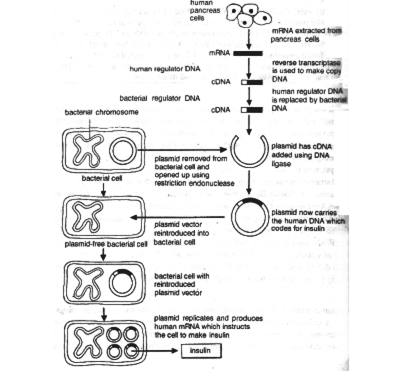 Long Answer Type
Long Answer Type(a) Give any three characters that have developed during human evolution.
(b) Explain the term chemogeny.
(c) Give any two distinctive features of Dryopithecus.
(a) Explain the evolution of giraffe’s neck according to Lamarck’s theory of evolution.
(b) Give two chromosomal similarities between man and apes.
(c) Name any two temporary embryonic structures in vertebrates which provide evidence for evolution.
(a) Persons suffering from sickle cell anaemia are at an advantage in Malaria infested areas. Explain.
(b) Define the term gene flow.
(c) What are analogous organs? Describe with one example from the plant kingdom.
(a) With the help of diagrams, name and describe the different types of placentation seen in angiosperms.
(b) Give four points of anatomical differences between a monocot stem and a dicot stem.
(c) Define the following terms:
(i) Racemose inflorescence
(ii) Osmotic pressure
(a) Draw a diagram of the internal structure of the human ovary.
(b) Define the term water potential.What are its components? Explain.
(c) Give definition and importance of:
(i) Imbibition
(ii) Parturition
(a) Give four adaptations in flowers pollinated by insects.
(b) Describe the mass flow hypothesis for translocation of organic solutes (food) in plants.
(c) Write a brief note on the causes of infertility.
(a) Give any four reasons for Mendel’s success.
(b) Briefly describe the technique employed in DNA fingerprinting.
(c) Give any two features of Genetic Code.
(a) Explain the mechanism of action of T cells to antigens.
(b)Explain how insulin can be produced using recombinant DNA technology.
(c) What is pisiculture? Give one advantage.
(a ) Mechanism of Action of T-cells: Like B-lymphocytes, T-cells are also antigen-specific as each T cell recognises a specific antigen. Thus, different types of T-cells are stimulated by different types of antigens.
When a T-cell comes in contact with an antigen, the T-lymphocyte divides rapidly to form a clone of T cells. A clone of T-cells has four types of cells. These are helper T-cells, killer T-cells, suppressors T-cells and memory T-cells. Out of these, the first three are also called effector cells. Cytotoxic T-cells or Killer T-cells (Tc cells) destroy infected cells having foreign antigens attached to their surface. They become active on receiving signal molecules from helper T-cells and antigen presenting cells or by foreign antigen. They secrete perforin molecules and granzymes.
(a) Perforins form pores in the cell membrane of infected cells. Water and ions enter the infected cells through these pores and cause their bursting.
(b) Granzymes enter the infected cells by endocytosis and initiate its apoptosis (cell death) leading to fragmentation of its nucleus and cytoplasm. Memory T-cells are sensitised by antigens and retain sensitisation for the future. Suppressor T-cells inhibit immune response by releasing cytokines that suppress activity of other Tcells and B-cells. Helper T-cells secrete substances that enhance or activate immune response.
(b) Production of insulin using recombinant DNA technology:
i. Extraction of mRNA (coding for insulin) from pancreas cell from human (donor)
ii. With the help of reverse transcriptase making copy of DNA (c DNA) (coding for insulin)
iii. Extraction of plasmid from bacterial cell.
iv. Opening plasmid using restriction endonuclease.
v. Insertion of cDNA in plasmid and sealing it using DNA ligase.
vi. Reintroduction of plasmid vector (recombinant vector) into bacterial cell (a competent host cell)
vii. Culturing these cells to obtain multiple copies or clones of derived fragment of DNA (cDNA).
viii Replication of plasmid and production of human mRNA which instructs the cell to make insulin (Humulin)
(c) Pisciculture is the production and breeding of fishes by man in ponds. Advantage : Fish oils are employed in the leather industry. Fish body oils are also employed in the manufacture of candles, etc.
(a)Name the causative organism andpreventive measures for each of the following:
(i) Swine flu
(ii) Typhoid
(iii) Filariasis
(iv) Syphilis
(b)State four causes and four consequences of population growth.
(c)Differentiate between:
(i)Cannabinoids and Barbiturates
(ii)Biotic potential and Carrying capacity
